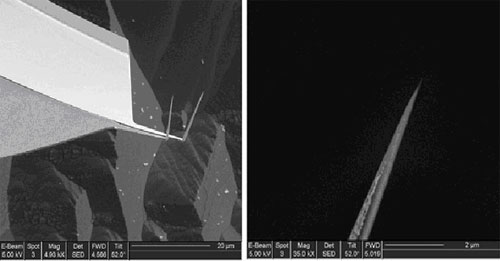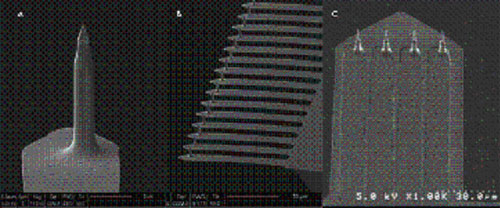Bioelectricity
Bioelectricity
This research focuses on exploring the possibility of drawing electricity directly from biological cells. For this purpose we use the unicellular alga Chlamydomonas reinhardtii. In the organism, solar energy splits water into oxygen, protons and electrons driven by the excitation of the two photosystems of the photosynthetic electron transport system, located in the thylakoid membranes of chloroplasts. We employ nano-probe systems to locally capture the generated high energy electrons in order to harvest electrical energy.

http://pubs.acs.org/doi/full/10.1021/nl903141j
Open micro-fluidic system for single cell probing by atomic force microscopy
To overcome challenges such as immobilization of live cells, compatibility of the immobilization procedure with AFM manipulation of the probe, maintenance of biological activity of the cells for an extended time while performing the measurements, and minimization of electrochemical noise, we have developed an open micro-fluidic channel system (OMFC) in which individual cells can be immobilized in micro-traps by capillary flow.

http://pubs.rsc.org/en/Content/ArticleLanding/2008/LC/b803450h
Probes
High-aspect ratio electrochemical tip probes embedded in silicon nitride cantilevers and bended silicon nitride probes have been developed for simultaneous AFM and SECM analyses. The fabrication processes are based on batch processes in combination with an etch-mask technology utilizing FIB techniques to achieve both well-defined ultra micro/nano (UME/UNE) electrodes and sharp high-aspect ratio tips on a single cantilever as well as on cantilever arrays.


Bai, et. al. , Sensors and Actuators B: Chemical, Volume 130, Issue 1, 2008, 249. Fasching, et. al., Microelectronic Engineering, Volume 83, Issues 4-9, 2006, 1638.

